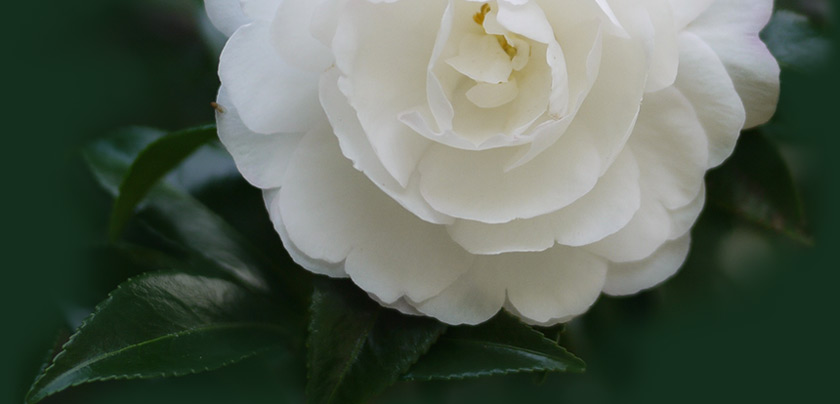We are often asked how we grow our camellias. We say we take cuttings and we have had the response – so you just cut a bit off and stick it in a pot?! Well – the answer is yes – but we are a little more particular than that. So here is our basic process – for anyone interested.
We are located on the Sunshine Coast in South East Queensland. Timings will be different for different locations.
Camellia Cuttings – We start around mid December – early summer. Places south of here would be a little later as our growth starts earlier. Exactly when is when the wood is right – the new growth needs to harden off from green to light tan. Too early (too green) and the cutting collapses. Too old and the cutting is less likely to put out roots. We take some species cuttings at different times as they put on growth differently eg we do sinensis in September. The cutting piece is usually about 3 to 4 inches (8-10cm). Depends on variety – some like Sophie Ducker or Quintessence, the cuttings is about 1inch. Expose the cambium layer by slicing down the lower 10 to 15mm of the cutting stem. We use purple Clonex gel (for semi hardwood cuttings). Some varieties strike so easily that hormone is not necessary – but why take that risk! Dip the lower part (10 – 15mm) of the cutting in and then we like to let them rest for a minute or 2 for it to stick (based on no scientific evidence but it seems like a good idea and suits our process when doing multiples of the same variety). Stick your cutting in your watered, prepared medium to a depth of about 2cm – again depends on the length of the cutting – but certainly past the cut cambium part.
The mix – Sand and peat was always the rule – one which we have never followed. It seems too heavy. We use a mix of 3 parts our normal potting mix (85% pine bark fines and 15% sand) and one part one of absorbalite (diatomaceous earth), vermiculite, perlite (we have used all 3 at different times depending on availability with no visible difference with success). Use a small pot or 40mm tube for single cuttings, water until wet (let it drain), pre poke a small hole for the cutting (this is supposed to not wipe off the hormone but the gel sticks and so this is not so much an issue as with powder – which we have never used) – but the holes help when putting in multiple cuttings. We mostly use a ‘community pot’ ( a squat 7 inch pot) and use a jig to put 25 holes in at once – 25 cuttings per pot of the same variety.
Water in. Label – variety, date, source of material. You never remember otherwise. We use a purpose built propagation house with an automated misting system – mist comes on for about 15 seconds every 10 or 15 minutes (depending on the weather, time of year and stage of the cuttings. But you probably don’t have one of these handy. So use a plastic ‘soft drink’ bottle, cut off the bottom, leave the screw lid on, and place over the cutting/s. It’s good if the bottle base is inside the pot. This makes a mini greenhouse. A plastic bag held up with wire or sticks works too. Place in a shaded position. Inspect regularly for moisture (you can water small pots from the bottom by immersing them) – and moisture condensation inside the bottle is a good indicator.
We have never used bottom heat. Our success rate would indicate that we don’t need it. Maybe it would help with more difficult varieties. As I understand it, the wisdom is that the temperature of growing medium (pot) should be higher than the ambient temp for best root promotion – and the only way to get this is bottom heat. I think that as long as the medium is a high enough temperature (which we have in summer), then striking follows without additional bottom heat.
December/Jan cuttings will have roots usually after about April (12 weeks). We leave ours much longer and feed with a weak liquid feed and Seasol. We like the roots to be pretty well developed before potting up – which we do over September and October. We use this timeframe because we are busy with other functions (sales, shows) earlier and also we don’t have the space to put down the potted up cuttings.
We pot straight into a 140mm pots. We use 8gm – a teaspoon – of a 12 month CRF (Controlled release fertiliser) per pot. Mix the fertiliser through the mix – the camellia roots will avoid a blob of fertiliser whereas a weed or thistle will engulf the lot. New growth will start Sept/Oct/Nov depending on variety/species (Japs will always start new growth before sasanquas) irrespective of when the cuttings are potted up.We expect 95% strike rate for most varieties. Some we get 10% – or something in between (retics, Mark Alan Var we have high failure rates) which is why commercial growers drop some varieties from their list – the failure rate makes it unviable commercially.
This process has worked for us well for 20 years – some is very low tech compared to what others may use but it suits us and is easily adapted for general use by anyone.








